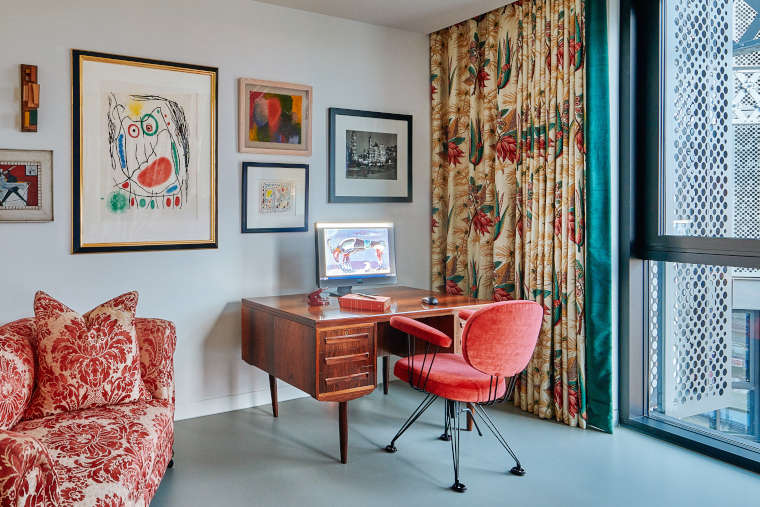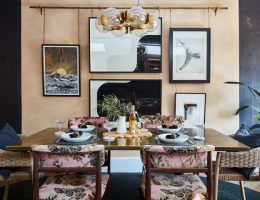In the last of her three part series for The Insider, Verity Woolf discusses her love of art and how she incorporates both classic and contemporary pieces into her interiors
What came first, your love of interior design or of art? I have always looked to art and fashion as an inspiration for design. I cannot remember a time when I did not design or look at art – it has been with me all my life. I think designers pick up ideas everywhere they go. I remember the amazing catwalk shows of Alexander McQueen – he was a genius, his catwalk was a living breathing art installation.
I still remember the Titian and Vermeer paintings I saw in the National Gallery when I was a small child and remember quite a few attempts to recreate the works. I sold my first artworks at 13 at school parents’ meeting. I would ‘clean up’ because I realised that I had a captive audience and, in those days, people carried cash. It felt amazing to make something that someone else valued enough to buy.
I did go on to study fine art and art history at Goldsmiths and I have to say that the most useful subject I have ever studied is the history of art and design. I have used it in so many ways throughout my career, it is just so handy and enriching for our projects to have a great working knowledge of what has come before. After college I became a production set designer for film and television and later, when I started designing and building permanent spaces, I qualified as an interior architect. The history or art and design has informed all of my work in every way.
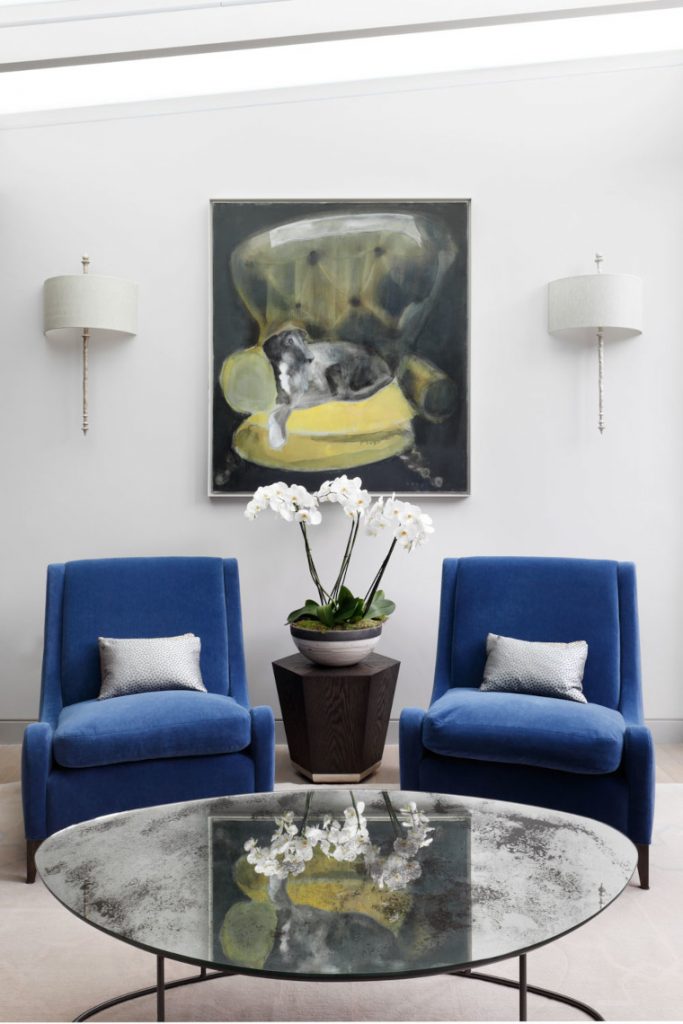
Have you always sourced and purchased the art for your projects or is this a facet of your business that has developed over the years? I think you get the clients you deserve and as it happens, all of our clients (hotel or residential ) have an art collection of sorts and they all seem to value art in addition to good design. At WOOLF Interior Design we always integrate our clients’ existing collections into new interior schemes, wanting to maximize the impact of their artwork, often showing them in a new light.
Do you have a period that you are particularly drawn to? We generally take a fluid approach to styles and cultures, mixing high and low art, elegance and edginess. I always want to ensure every piece reflects the character and interests of our client and forms a narrative for the spaces, so in that sense we are less focused on a particular period.
At what stage do you consider what artwork and sculptures you would like to include in your projects? Sometimes we look at the work and design a scheme around it and then again, we often find a piece that really works when we are in the middle of specifying a scheme. Often, we will finish a space and then source the right piece to complete the picture. It can be quite fluid process.
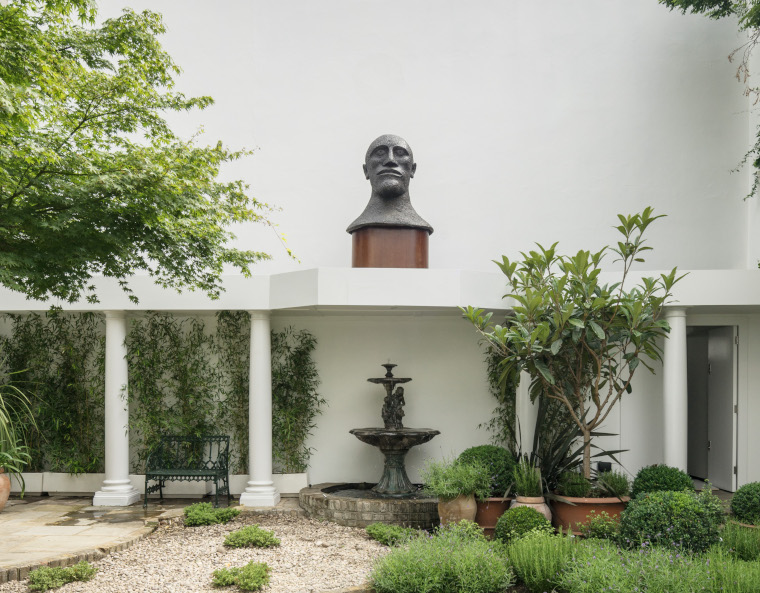
How involved should clients be in the decision making process? With residential projects I always think that art work is like jewellery – its personal so we always look at works with our clients, it’s a totally symbiotic process. With hotels we look at art from a different perspective, we source and present works that are integral to the overall brand vision and the budget. Investment pieces are a very exciting way of determining a choice. It’s just so interesting when we start looking at the value of a collection from both an aesthetic perspective and from a valuation perspective.
Are there different challenges sourcing art for a contemporary interior and for a historic property? The only considerations we tackle in placing artwork in historic interiors are to do with how we light pieces and that often means we are working with listing to determine the effectiveness of lighting. We need to also consider the effect of natural light on pieces from a preservation perspective. In a contemporary setting we mainly need to leave enough wall space and architectural nooks to hang art work and set out sculptures, not open-up so much that we have no space left to place works.
Are you continually adding to your little black book of contacts? WOOLF sources art works but we also curate entire collections for our projects because we have evolved a wide network of artists, galleries, dealers and auctions. These include PAD London, Frieze & Frieze Masters, Masterpiece London, Affordable Art Fair, Artnet, Artsy, Christie’s, Sotherby’s, Phillips, Bonhams and Criterion & Heritage Auctions. Sometimes we bring in a superb art consultant who can help us with negotiations on blue chip works, who will also appraise the overall valuation, insurance and transportation process.
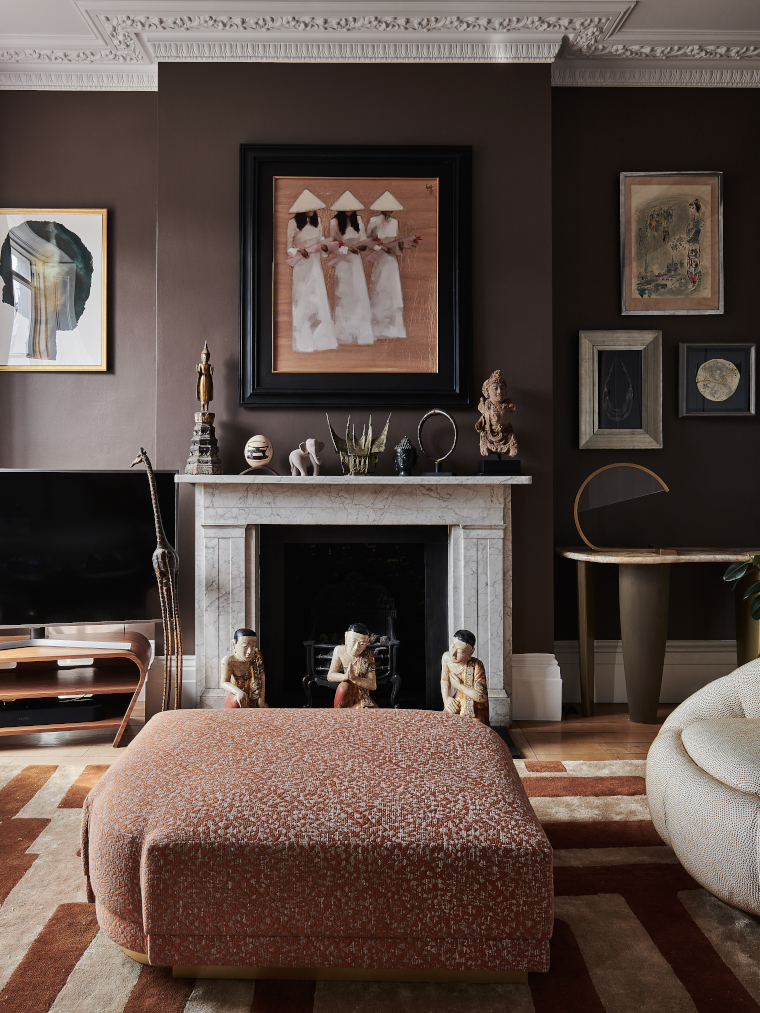
What challenges do you face incorporating a client’s own collection into an interior scheme? Mainly if a current piece is the wrong scale for a space, we need to re think it and at times we will add in a few more pieces, to make a particular piece work harder.
What is your top tip for successfully introducing artworks into an interior project? It’s all about the context and how you set out works. In terms of colour and tone I always try to work existing pieces in, however unexpected the combination might at first appear.
What’s your favourite possession? We are a busy studio located both in London and Bath. I am on the move a lot and I have a family and two dogs, my husband works in music and travels a lot, so in all honesty my favourite possession is undoubtedly my bed!
No seriously, my favourite art work? I have a Lalique Lucite Horse Table Lamp sculpture that I bought in a market as a student. It makes me very happy; I am a huge horse lover and when it lights up, I find it peaceful.
If you enjoyed reading this feature, you may also enjoy Verity’s thoughts on working with listed buildings and creating the perfect hotel bedroom
